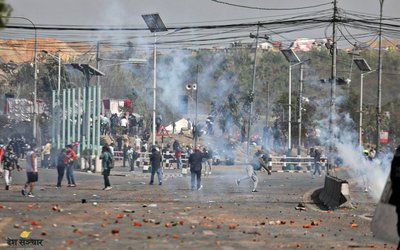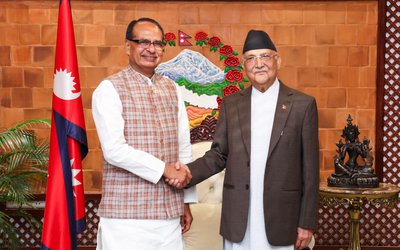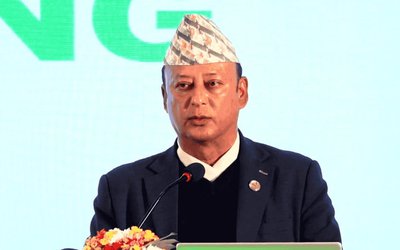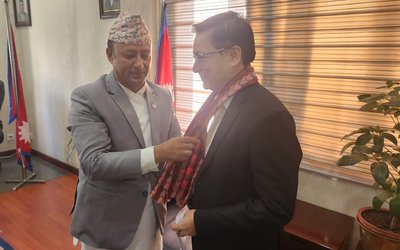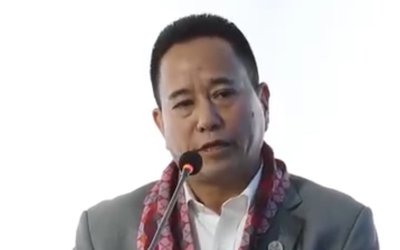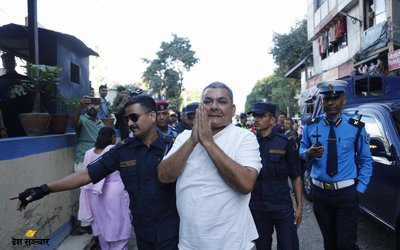As just over a year is left to implement the constitutional provisions, holding the elections of local bodies, provinces and center, Nepal’s current administrative units and service delivery institutions need to be transformed.
Holding the elections of the three tires of government is a political responsibility, but the bigger responsibility to transform administrative units of erstwhile unitary state lies on the office of chief secretary Dr. Som Lal Subedi.
As Nepal is heading to implement the federal structure in the country, Nepal government is in a drive to restructure its frontline organizations to prepare delivery and administrative institutions towards this direction.
With an aim to make the new institutions compatible and effective in federal structure, chief secretary Dr.Som Lal Subedi, who holds Ph.d in fiscal decentralization, issued the road map for restructuring.
Holding several rounds of discussions with secretaries and concerned officials, Chief Secretary Dr. Subedi, who has long experiences of working in the Ministry of Local Development in various positions, including at the secretary level, knows the effective ways to restructuring the administrative and service delivery units.
As the time is going fast, chief secretary Dr. Subedi has issued the road map to achieve the targets.
Following are the steps in the Roadmap of Chief Secretary for state restructuring.
1. Cluster wise detailing of the powers of federation, provinces and local level units according to constitution.
2. Detailing of listed powers into related functions.
3. Unbundling the concurrent powers, distributing them to clusters and allocating federal units based on the constitutional provisions.
4. Identifying the institutions and designing the organizational structures at federal province and local level according to functional analysis.
5. Examining and comparing demand and existing institutions and proposed required institutions and organizations.
6. Projection of Human Resources (HR) according to proposed organizations.
7. Proposing HR according to restructuring of organizations.
8. Adjustment of HR after merger of existing job description, detailed functions of exclusive and concurrent powers.
9. Right sizing of ministries at federation and appropriate design for the province according to constitutional provision.
10. Cluster-wise transitional operation plan of development projects.
11. Define interrelationship mechanism and modalities between different federal units and organizations and civil servants.
12. Legislations (formation/modification/ amendment of law).
13. Establishment of system of accountability/code of conduct and standards to service delivery.
14. Identification of concerned issues to implementation of constitution, policies, laws and standards.
15. Monitoring, regulation and evaluation.
16. Descriptions and analysis of infrastructures, review, public assets, required infrastructures of districts, regional directorates, service centers and sub-service centers and others.
17. Existing resource analysis and fiscal transfer.
18. Minimum level wise requirement of resources on the basis of existing capacity.
19. Modalities of deficit and covering of resource management
20. Mobilization of Revenue, utilization potentialities, requirement of equalization grants as well as mechanism.
21. Financial discipline, control and reduction of financial risk.
22. Lead institution for overall implementation, coordination and facilitation.
23. Mechanism of disputes settlement
24. Established to required systems and subsystem in provinces
25. Inter cluster issues and coordination aspects.

Keshab Poudel
Poudel is the editor of New Spotlight Magazine.
- POLITICAL VIOLENCE: Culture of Impunity
- Apr 11, 2025
- PM OLI MEETS PM MODI: No Progress
- Apr 09, 2025
- PM OLI’S THAILAND VISIT: Flip Flop
- Apr 08, 2025
- FM Dr. Deuba’s India Visit: Mission Aborted
- Mar 26, 2025
- AMBASSADOR MAEDA TORU: Warm Regards
- Mar 24, 2025
